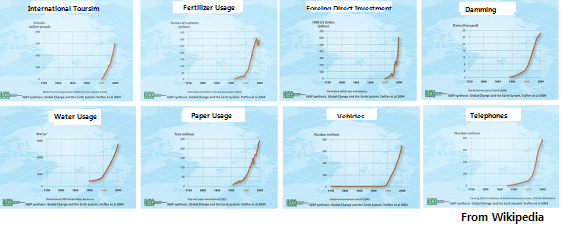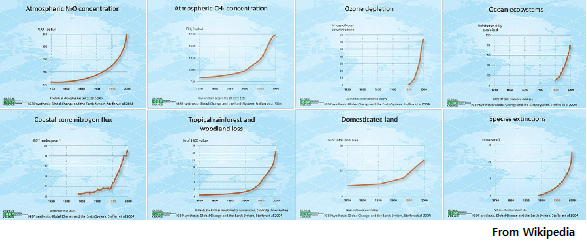In what state are we at the moment, in the 21st century? It is not a simple question, provoking countless versions of answers. Still we can draw out several points for discussion, one of which will be: The world is changing so fast at the moment. This is also one of the major foci on which we will concentrate here in this series.
I have already posted writings on this issue in the category of Watching and Thinking Global Change. But I’ll introduce parts of the postings into this and coming postings if the context requires it. For more detail on this issue, you can refer to postings of the above category.
The graphs above are provided by International Geosphere Biosphere Programme, IGBP, a research institute on the global change. Starting from the year 1750 to 2000, these graphs are telling us that we are not wrong in perceiving the earth going into a vortex of rapid change.
Changing human activities inevitaby lead to changing impacts on the environment.
Here are some of the conclusions that can be drawn from the above graphs.
– Everything on earth is on the accelerated change.
– Such changes are going in the similar pattern in each and every field.
– Whatever field the change belongs to, it’s got accelerated around the turn to the 20th century, and much more accelerated around 1970s.
– Changes seem to be going into peak at the moment, making the nearest future almost unpredictable.
– Such changes are reflected in human behavior getting more active, consuming more resources, and thereby giving more impact to the environment.
– Apparently, such trend is going to continue for some time being.
Wikipedia, the source of these graphs, put all these graphs under the title of “Great Acceleration”..
Why is this earth changing everywhere, and why are these changes so accelerating? In what way such trend of change is related to discussing ‘spirituality’?
For an answer for the first question, we need to look into the past of the earth. As these graphs are showing that we are in the continuum from the past, perhaps we can have bigger picture by expanding the time span of our inquiry.

